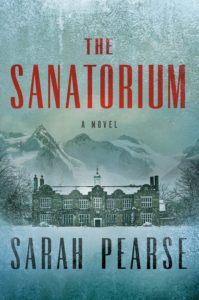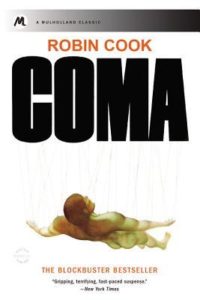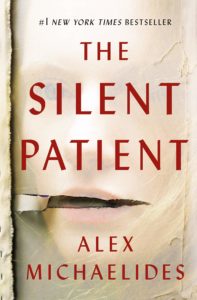I’ve been poisoned with arsenic trioxide. Well, technically, “treated” with arsenic would be a more accurate portrayal. In the summer of 2011, for nearly three months, five days a week, arsenic trioxide dripped from a bag hanging on a pole beside me into an IV tube that connected, through a butterfly needle, to one of my veins. Throughout those infusion visits as an acute promyelocytic leukemia patient at the age of 31, I often thought about Agatha Christie’s adoration of arsenic as a murder weapon. My uncle Bobby was equally intrigued by the “toxin” that would save my life. He bought me a copy of Deborah Blum’s The Poisoner’s Handbook: Murder and the Birth of Forensic Medicine in Jazz Age New York, which devotes an entire chapter to the chemical compound with which I was repeatedly dosed that brutal summer.
Throughout that experience, I often thought about the dual nature of the drug. And, yes, doing so freaked me out. But because of it, I’m alive today. William Withering, a fifteenth century scientist, supported the use of arsenic-based therapies, arguing that “Poisons in small doses are the best medicines; and the best medicines in too large doses are poisonous.”
The ability for a single substance to both save and take a life represents mind-boggling power contained within a handful of bonded arsenic and oxygen atoms. That same magnitude of power [befits] many aspects of medicine, from the surgical scalpels designed to cleave tissue to the doctors who wield them to the facilities in which they work. Fortunately, in real life, the institution of modern medicine is a noble one, filled with selfless people hellbent on saving lives and improving their quality. Rare is the example of violation of this power. But in mystery and thriller novels, the twisting of intent for medical instruments, institutions, and professionals can create chillingly effective tension and fear.
In my debut novel, The Vines, a woman with an astonishing immune system and equally dramatic determination to survive, is held captive by a family of doctors on an abandoned island littered with the ruins of a New York City quarantine hospital. In 2014, while recovering from three years of cancer treatments, I became fascinated by the dark history of Riverside Hospital on North Brother Island, located in the East River, north of Hell Gate. With the horrors of what my body had been through still fresh in my memory, and the capacity for the instruments of medicine to do both good and evil still a philosophical thought that lingered, I created a story that now, in retrospect as a long-term survivor, scares me.
Here are eight of my favorite novels that break the “do no harm” medical oath.

Shutter Island by Dennis Lehane
In this masterpiece, reality and perception bleed into each other on remote Shutter Island, home of Ashecliffe Hospital for the criminally insane. The nature—good or evil—of both the psychotropic drugs and the doctors who administer them on an experimental basis are called into question. The riveting storytelling is fraught with medical ethics quandaries. Pinned on the island by a tropic storm, U.S. Marshal Teddy Daniels finds that the truth is even harder to escape, if it even is the truth.

Woman 99 by Greer Macallister
Set in the fictional Goldengrove Asylum for the Curable Insane in the 1880s, this historical novel plunges the reader into its creepy, confining setting. To rescue her sister, who’s already there, Charlotte gets herself committed to the facility, then discovers that it’s not so easy to get back out. She also discovers that many of her fellow inmates seem to have been sent away for being “inconvenient,” not insane. The institution’s treatments seem more likely to cause insanity than to cure it. And the motives of the facility’s medical staff may not be what they seem . . .

The Sanatorium by Sarah Pearse
Firmly establishing an ominous tone through its title alone, this heart-pounding thriller fully capitalizes on the aura of misery permeating from its setting: an abandoned sanatorium for tuberculosis patients that’s been renovated into a luxury hotel. The novel’s opening line begins with “Discarded medical equipment litters the floor . . .” The minimalist style of the hotel, with its eerie artifacts from the building’s former life, sets Detective Elin Warner on edge, even before a woman goes missing during a snowstorm that traps everyone within the sinister Le Sommet hotel.

Coma by Robin Cook
This wildly successful medical thriller gives credence to the squeamish feeling that seizes so many of us upon entering a sterile hospital setting. Third-year medical student Susan Wheeler notices a pattern of healthy adults mysteriously lapsing into comas after routine surgical procedures. Susan’s search for understanding leads her further into the bowels of a medical system, whose ideology has been grotesquely warped.

The Impossible Girl by Lydia Kang
Written by a physician who excels in the art of manipulating the life-or-death stakes associated with the field of medicine, this story follows Cora, a girl born with two hearts. In the 1850s, such an anomaly was considered a prize for gravediggers and anatomists alike. Cora knows that her value as a cadaver, to be dissected and displayed for the public, keeps her in permanent danger. So, to keep her enemies close, she’s joined their trade.

An Anonymous Girl by Greer Hendricks and Sarah Pekkanen
In this palpably tense bestseller, Jessica, a New York City-based makeup artist, intensely pressured, struggling, and quietly living on the edge, agrees, for what she believes will be an almost criminally easy payday, to participate in a psychological study on ethics and morality. Manipulated, gaslit, and drawn into a frightening web of deceit by the brilliant and calculating Dr. Shields, Jessica must become amateur sleuth, while fighting to keep her secrets hidden and herself intact. . .

The Silent Patient by Alex Michaelides
This unstoppable blockbuster bestseller, still going strong, hooks from the very first page, keeping the captivated reader ensnared, provoked, and guessing, guessing, guessing. Alicia Berenson’s charmed life comes to an end after she fatally shoots her husband and stops speaking. Once a famous artist, with an envied existence, she, while tucked away in a moody forensics unit, has been reduced to the study subject of psychotherapist, Theo Faber, who digs into her final painting in search of the clues he can’t retrieve from his silent patient.

One Flew Over The Cuckoo’s Nest by Ken Kesey
The wrenching classic novel, which sits atop numerous best fiction lists, transports and profoundly haunts. When Randall McMurphy, a free-spirited, wildly rebellious con man, fakes insanity to beat a prison sentence of hard labor, he believes he’s pulling the ultimate hustle and that his time behind psychiatric facility bars will be a breeze. Housed with a cast of heartbreakingly damaged and traumatized men, whose minds and hearts have been left to slowly decompose at the hands of a cruel and sadistic nurse, McMurphy tries, and temporarily succeeds, to breathe life and spirit into their dark lives. In an unforgettably dehumanizing twist that shocks and tortures, McMurphy pays for his “sins” with the sickening, twisted, and perverse use of a legal medical treatment.
***


















